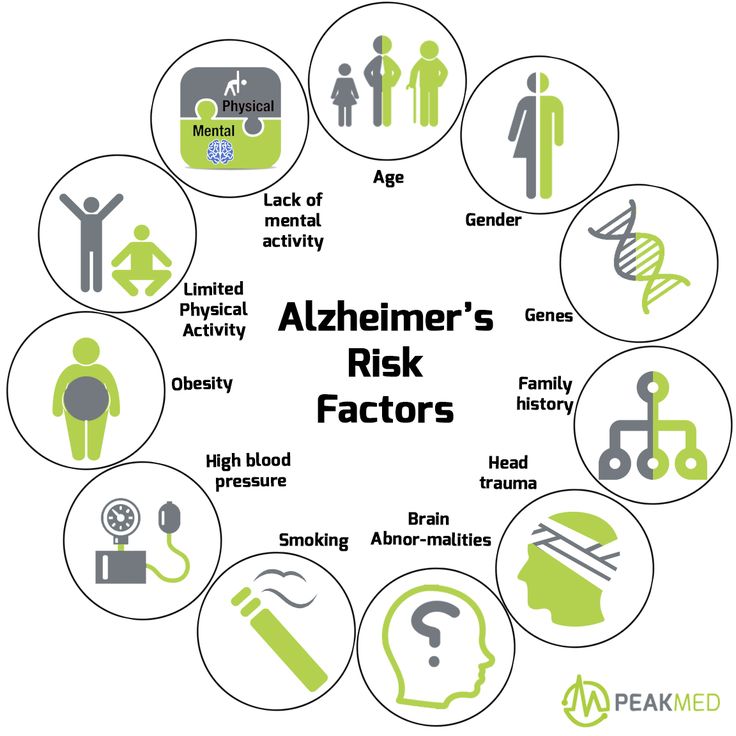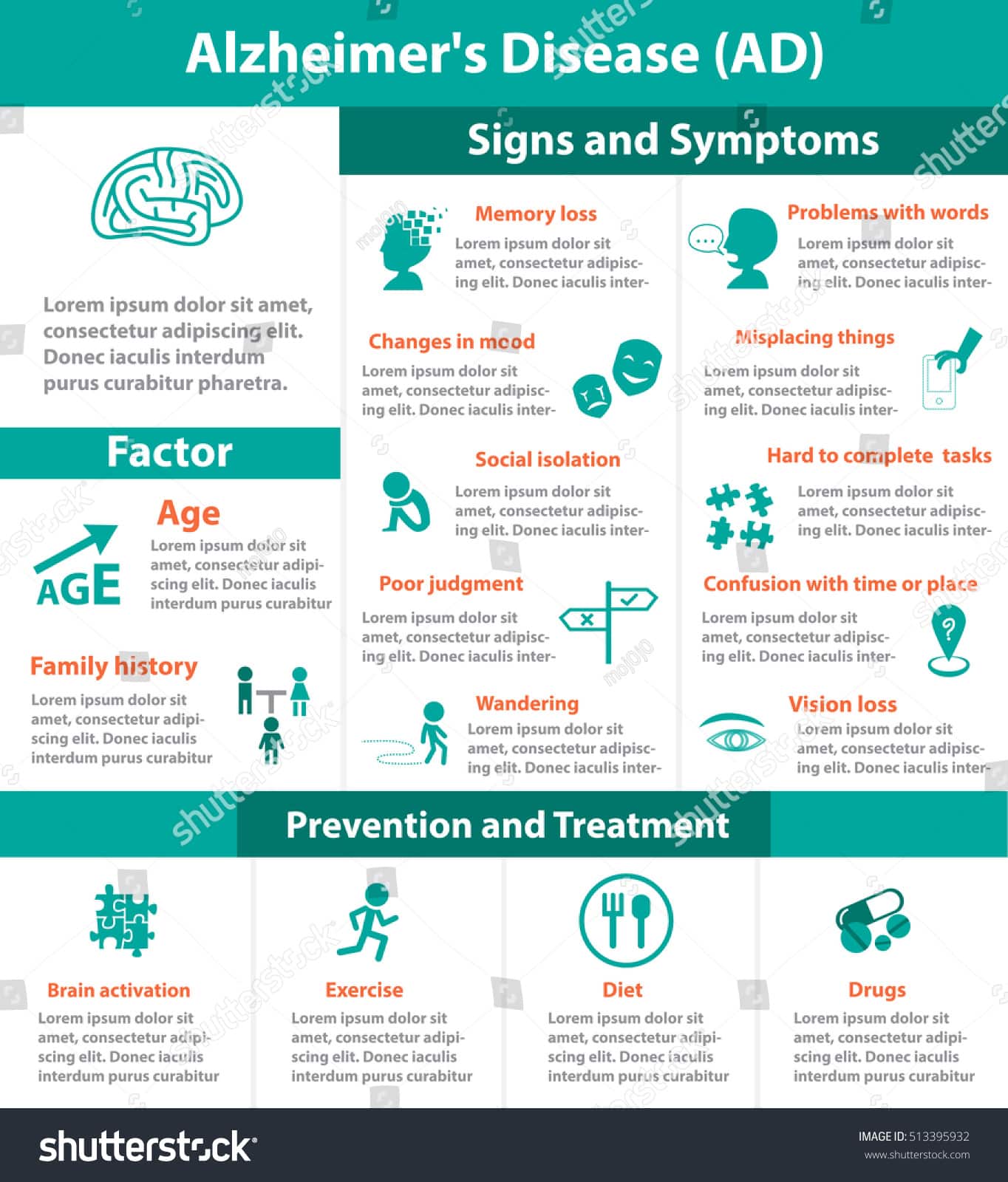What Are The Treatments For Dementia
There is no cure for most types of dementia, including Alzheimer’s disease and Lewy body dementia. Treatments may help to maintain mental function longer, manage behavioral symptoms, and slow down the symptoms of disease. They may include:
- Medicines may temporarily improve memory and thinking or slow down their decline. They only work in some people. Other medicines can treat symptoms such as anxiety, depression, sleep problems, and muscle stiffness. Some of these medicines can cause strong side effects in people with dementia. It is important to talk to your health care provider about which medicines will be safe for you.
- Occupational therapy to help find ways to more easily do everyday activities
- Speech therapy to help with swallowing difficulties and trouble speaking loudly and clearly
- Mental health counseling to help people with dementia and their families learn how to manage difficult emotions and behaviors. It can also help them plan for the future.
- Music or art therapy to reduce anxiety and improve well-being
Coping Strategies For Alzheimer’s Disease Caregivers
If you are a caregiver for someone suffering from Alzheimer’s disease , you may face difficult challenges as you try to provide care and understand the behavior changes of the person you are caring for. Understanding the behavior of a person with AD can help lessen these difficulties.
People with AD may exhibit the following behaviors:
- Extreme anxiety about daily life, which may be exhibited by asking questions and repeating information about once familiar events and/or people, preparing for appointments/day care well ahead of time and using notes and reminders endlessly.
- Apathy or a lack of initiative about tasks that used to be routine, though now feel overwhelming. For example, the person who always enjoyed puzzles but no longer does them because they are too overwhelming and require skills he/she no longer possesses.
- Frequent agitation may occur as people become less able to interpret their environment and control or express their feelings. For example, a person with AD may strike out at a caregiver.
Ethnoracial Disparities Across Alzheimer’s Disease Presentation
In 2019, it was reported in a population-based study of individuals 65 years of age or older 3.2 million Medicare Fee-for-Service beneficiaries and 5 million people from the US Census carried an AD diagnosis in 2014 . AD diagnoses were more prevalent in women than men for both sample populations, and the frequency of AD diagnoses increased with standard age groups: 3.6% for those between 65 and 74 years of age, 13.6% for 75 and 84 years, and 34.6% for individuals 85 years of age and older. Matthews et al. outlined the prevalence of AD by ethnoracial subgroup for both the beneficiary and the Census populations listed here: Medicare Beneficiaries: Blacks , Hispanics , non-Hispanic Whites , American Indian or Native Alaskan , and Asian or Pacific Islanders Census: Blacks , Hispanics , those belonging to two or more ethnoracial groups , non-Hispanic Whites , American Indian or Native Alaskan , and Asian or Pacific Islanders . Overall, for individuals 85 years or older, more than 43% of Blacks and 40% of Hispanics bear the most burden of AD and related disorders . With the prevalence of AD and related disorders being substantially higher for some ethnoracial groups, these groups with higher prevalence also tend to be the most underrepresented in research . The reasons behind the disparities in the outcomes of AD research remains largely unanswered.
Don’t Miss: Does Alcohol Cause Alzheimer’s Disease
What Causes Alzheimer’s Disease
Alzheimers disease affects 1 in 8 individuals over the age of 65 and is the most common form of dementia, however the cause of the disease is currently unknown. Some suspected causes include diseased genes or a genetic predisposition, abnormal protein build-up in the brain, and environmental toxins.
According to the U.S. Department of Health and Human Services, nearly twice as many women have AD as men. AD also worsens more quickly in women than it does in men.
Does Higher Learning Combat Dementia

Baby boomers: Did you know that dementia rates are declining? Common wisdom suggests that as people grow older and increasingly develop conditions that contribute to poor brain health, the prevalence of dementia would increase. But this might not be the caseand more years of education may partly to thank.
A study published in JAMA Internal Medicine shows that dementia prevalence fell from 2000 to 2012 in people 65 and older, and that this drop was associated with staying in school longer.
Notably, the decrease in dementia occurred despite the increased prevalence of high blood pressure and diabetes, conditions that can increase dementia risk, comments Esther Oh, M.D., Ph.D., associate director of the Johns Hopkins Memory and Alzheimer’s Treatment Center. Oh, who is not affiliated with the study, also says that while the decline appears to be related to improved education levels, more research is needed.
Recommended Reading: What Are The Pathological Features Of Alzheimer’s
Cholinergic Neurotransmission And Alzheimer Disease
The cholinergic system is involved in memory function, and cholinergic deficiency has been implicated in the cognitive decline and behavioral changes of AD. Activity of the synthetic enzyme choline acetyltransferase and the catabolic enzyme acetylcholinesterase are significantly reduced in the cerebral cortex, hippocampus, and amygdala in patients with AD.
The nucleus basalis of Meynert and diagonal band of Broca provide the main cholinergic input to the hippocampus, amygdala, and neocortex, which are lost in patients with AD. Loss of cortical CAT and decline in acetylcholine synthesis in biopsy specimens have been found to correlate with cognitive impairment and reaction-time performance. Because cholinergic dysfunction may contribute to the symptoms of patients with AD, enhancing cholinergic neurotransmission constitutes a rational basis for symptomatic treatment.
Who Has Alzheimers Disease
- In 2020, as many as 5.8 million Americans were living with Alzheimers disease.1
- Younger people may get Alzheimers disease, but it is less common.
- The number of people living with the disease doubles every 5 years beyond age 65.
- This number is projected to nearly triple to 14 million people by 2060.1
- Symptoms of the disease can first appear after age 60, and the risk increases with age.
Don’t Miss: What Is Difference Between Delirium And Dementia
Concerned About Memory Loss Talk To Your Doctor
Despite the decline in dementia rates reported in this study, people should still be concerned about their cognitive health, says Oh. Dementia is age-related, and as the population ages, the sheer number of people with dementia is going to be overwhelming, she notes.
In addition to an aging population, people are also living longer. So, even though the percentage of the population with dementia may decline, the overall number of individuals with the disease is likely to increase.
Regardless of declining rates, if youre experiencing any problems with memory, you should contact your doctor right away, she says.
What Is Alzheimer’s Disease
Alzheimer’s disease is the most common cause of dementia. Dementia is progressive and affects many brain functions, including memory.
The exact cause of Alzheimer’s disease is not yet known. However it is known that there is a gradual process of damage to part of the brain called the cerebral cortex. This is called cortical atrophy, which means destruction of the cells of the cerebral cortex so that the brain cells can’t function properly.
The damage to the cerebral cortex of the brain probably begins at least ten years before any symptoms develop.
Don’t Miss: Does Dementia Always Turn Into Alzheimer’s
Why Education May Help Prevent Dementia
Education could play an important role in improving cognitive reserve, which is the brains ability to cope with damage that would otherwise lead to dementia, according to Oh.
Research suggests that education helps the brain develop more synapses, which are the junctions between brain cells that relay information, but were not entirely sure, says Oh. More synapses may boost cognitive reserve, which may help prevent dementia.
Another reason could be that people with more education tend to have healthier lifestyles than those with less education. People who are more educated may be more aware that smoking, lack of exercise and not eating well are bad for their health, she says, and they may make healthier choices.
Alzheimers Diseases Importance For The General Population: Social Costs
While it is understandable why diagnosed patients seek new information and increase their knowledge on the topic, many others fail to acknowledge that AD might affect their lives directly or implicitly. Those who grow increasingly concerned about Alzheimers are the older generation however, with constant societal changes and improvements, the majority of the people will now reach the age of potential risk. Although the disease does not transmit from person to person, the better quality of life is, the more people reach older age, and consequently, more individuals risk containing Alzheimers disease . Therefore, investing time and money into AD research is a viable option for sustaining ones future.
In addition to being costly, Alzheimers disease also dramatically affects the social life of the patient and his surrounding. This societal threat is another widely ignored aspect of the condition that needs to be taken into consideration. The burden of care for both early and clinical-stage Alzheimers patients falls on the close social circle, care providers, and, later on, onto governmental healthcare systems, research and drug-discovery infrastructures, and public policy . Consequently, even if a person is not directly affected by the disease, he can be negatively influenced by the close sufferer of the illness.
Read Also: Is Nancy Pelosi Suffering From Dementia
What Is Known About Reducing Your Risk Of Alzheimers Disease
The science on risk reduction is quickly evolving, and major breakthroughs are within reach. For example, there is growing evidence that people who adopt healthy lifestyle habits like regular exercise and blood pressure management can lower their risk of dementia. There is growing scientific evidence that healthy behaviors, which have been shown to prevent cancer, diabetes, and heart disease, may also reduce risk for subjective cognitive decline. To learn more about the current state of evidence on dementia risk factors and the implications for public health, please read the following summaries on Cardiovascular Health, Exercise, Diabetes and Obesity, Traumatic Brain Injury , Tobacco and Alcohol, Diet and Nutrition, Sleep, Sensory Impairment, and Social Engagement or the Compiled Report .
Aging
How Is Alzheimers Disease Treated

Medical management can improve quality of life for individuals living with Alzheimers disease and for their caregivers. There is currently no known cure for Alzheimers disease. Treatment addresses several areas:
- Helping people maintain brain health.
- Managing behavioral symptoms.
- Slowing or delaying symptoms of the disease.
Read Also: Family Education For Dementia Patients
Try It Keep Your Mind Active
In addition to managing medical conditions that raise your dementia risk, Esther Oh, M.D., Ph.D., recommends keeping your mind active to preserve brain health. This doesnt have to involve crossword puzzles or buying an expensive computer program that challenges the brain, she says. Socializing with your friends, being engaged with your family and pursuing activities that interest you can help keep your mind working.
How Is Alzheimer’s Disease Diagnosed
As the symptoms progress slowly, it can be difficult to realise that there’s a problem. In the early stages of the disease the symptoms are often dismissed as a sign of ageing. However, early diagnosis of Alzheimer’s disease is very important in order that you can plan for the future and receive the best treatment and support that can be offered.
There’s no single test that can be used to diagnose Alzheimer’s disease. There are various tests that can be used to assess how well your brain is working. Usually blood tests are also arranged to check whether your symptoms may be caused by a different condition, such as hypothyroidism or vitamin B12 deficiency.
If Alzheimer’s disease is suspected, you may be referred to a specialist memory clinic for further assessment. Magnetic resonance imaging scans are used to rule out any other conditions that could affect the brain.
In the UK, the National Institute for Health and Care Excellence advises perfusion hexamethylpropyleneamine oxime single-photon emission computerised tomography to see whether the diagnosis is Alzheimer’s disease or any other cause of dementia.
Don’t Miss: Can You Change A Will If You Have Dementia
How Is Alzheimer’s Disease Treated
There’s no cure for Alzheimer’s disease however, medication is available that can help relieve some of the symptoms and slow down the progression of the condition in some people. The treatment and support that can be provided include:
- Support from social services, including carers and respite care.
- Help with legal issues such as Power of Attorney and a Living Will.
- Changes to your home environment to make it easier to deal with day-to-day activities..
- Overcoming difficulties with memory, such as reminder notes, lists and reorganising possessions.
See the separate leaflet called Medication and Treatment for Dementia.
What Are The Types Of Dementia
The most common types of dementia are known as neurodegenerative disorders. These are diseases in which the cells of the brain stop working or die. They include:
- Alzheimer’s disease, which is the most common form of dementia among older people. People with Alzheimer’s have plaques and tangles in their brain. These are abnormal buildups of different proteins. Beta-amyloid protein clumps up and forms plaques in between your brain cells. Tau protein builds up and forms tangles inside the nerve cells of your brain. There is also a loss of connection between nerve cells in the brain.
- Lewy body dementia, which causes movement symptoms along with dementia. Lewy bodies are abnormal deposits of a protein in the brain.
- Frontotemporal disorders, which cause changes to certain parts of the brain:
- Changes in the frontal lobe lead to behavioral symptoms
- Changes in the temporal lobe lead to language and emotional disorders
Other conditions can cause dementia or dementia-like symptoms, including:
- Having close family members who have dementia
Don’t Miss: How To Volunteer For Alzheimer’s
Treatment For Alzheimer’s Disease In Louisiana
Research into a vaccine continues, but so far there are no sure ways to prevent Alzheimers from developing. However, medications can help relieve some symptoms.
If you or a family member has been diagnosed with Alzheimers disease, you are not alone in Baton Rouge. The first step is to see a neurologist at The NeuroMedical Center for detailed neurologic testing and to help create a care plan that is right for your needs. Patients will usually have a CT or MRI scan of their brain to see if they have any other causes of memory loss. Doctors will also conduct various blood tests and sometimes perform an EEG, which is a test that measures the electrical activity from the brain. Patients can be referred to a neuropsychologist for more extensive memory testing.
After testing is complete your neurologist will discuss your results with you. Several medications are approved for treatment of mild, moderate, and severe stages of Alzheimers disease. Other medications can be helpful to treat other conditions common in AD such as depression, agitation, or hallucinations. Good management and control of other medical conditions such as high blood pressure, diabetes, etc. is important. Regular physical activity and mental stimulation are also helpful.
Neurofibrillary Tangles And Senile Plaques
Plaques are dense, mostly insoluble deposits of protein and cellular material outside and around the neurons. Plaques are made of beta-amyloid , a protein fragment snipped from a larger protein called amyloid precursor protein . These fragments clump together and are mixed with other molecules, neurons, and non-nerve cells .
In AD, plaques develop in the hippocampus, a structure deep in the brain that helps to encode memories, and in other areas of the cerebral cortex that are used in thinking and making decisions. Plaques may begin to develop as early as the fifth decade of life. Whether Ab plaques themselves cause AD or whether they are a by-product of the AD process is still unknown. It is known that changes in APP structure can cause a rare, inherited form of AD.
Tangles are insoluble twisted fibers that build up inside the nerve cell. Although many older people develop some plaques and tangles, the brains of people with AD have them to a greater extent, especially in certain regions of the brain that are important in memory. There are likely to be significant age-related differences in the extent to which the presence of plaques and tangles are indicative of the presence of dementia.
SPs also accumulate primarily in association cortices and in the hippocampus. Plaques and tangles have relatively discrete and stereotypical patterns of laminar distribution in the cerebral cortex, which indicate predominant involvement of corticocortical connections.
You May Like: Does Fish Oil Help Prevent Alzheimer’s
Can Alzheimer’s Disease Be Cured
There is no cure for Alzheimer’s disease and the difficulties gradually become increasingly severe. This can cause a great deal of distress for both the person with Alzheimer’s disease and for their family.
On average, people with Alzheimer’s disease live for around 8 to 10 years after they start to develop symptoms but this is very variable from person to person.
How The Federal Government Is Supporting Health Care Professionals

The federal government is investing in evidence-based research to find new ways to optimize dementia care quality and efficiency, which is one of the five goals in the National Plan to Address Alzheimers Disease. Efforts include:
Information and tools are available that can help you improve care for people with Alzheimers and related dementias.
Read Also: What Happens To The Brain When You Have Alzheimer Disease